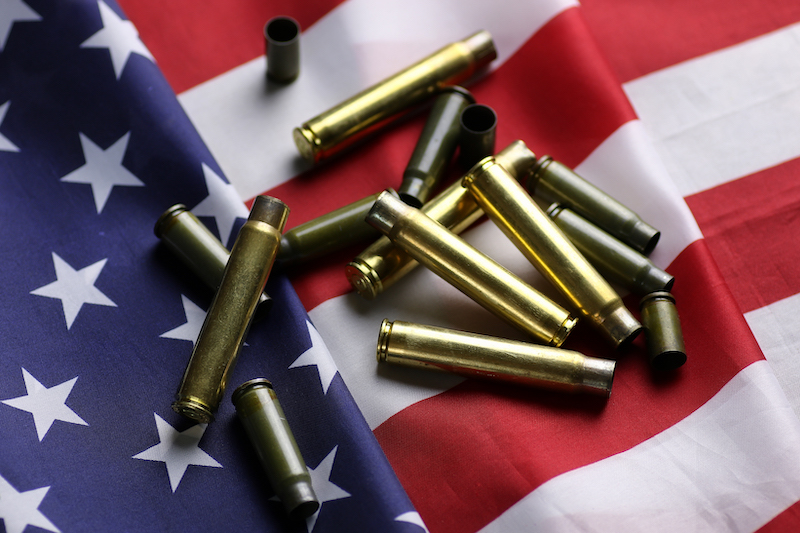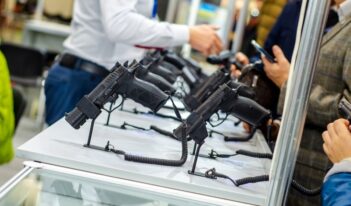
Lack of quality data hinders policymakers’ ability to create effective gun regulation.
Any realistic firearms policy must start with a recognition of the tradeoffs between the benefits of access to guns and the harms from their misuse. Just as with many other policy realms, regulations can be set to give consumers the benefit of a technology while limiting potential harm to others. Finding the right solution begins with better data collection, proceeds to a weighing of costs and benefits, and eventually leads to sensible policy, such as regulation or taxation.
Evaluating gun policy requires carefully laying out the various ways that guns provide benefits and harms. For instance, researchers need to estimate the benefits that firearms provide to millions of regular hunters and target shooters. Researchers also need data on physical and psychological costs to individuals, both due to injuries and deaths, but also the costs of precautions taken to avoid the risk of being shot.
Standard social science approaches, such as the use of contingent valuation or analyses of unexpected changes in fee structures to estimate the value of unpriced activities (like crime avoidance), could be used to estimate these values. Combining these costs and benefits would allow researchers to evaluate how different firearm policies could still preserve some of the benefits of access while reducing the harms.
As with all real-world problems, the path to carefully considered public policy decisions about firearms start with data. But gun regulations are an area where even basic facts, such as annual gun sales, are not well known, which is a massive impediment to progress in the field.
The lack of data has forced researchers to devise creative proxies for gun sales and ownership, because the true numbers are not generally available. For example, one of the best-known studies on the relationship between guns and crime, by Mark Duggan, uses sales of the magazine Guns & Ammo to proxy for the sales of guns. Another influential article on the topic, by Philip Cook and Jens Ludwig, uses the share of suicides committed with handguns as the proxy. Both are excellent papers that provide compelling evidence on the significant social cost of firearms.
But serious policy-making in this area is still hamstrung by a lack of access to data. A student of mine recently discovered firsthand the difficulty of finding precise information related to firearms when she sought data from one of the largest aggregators of consumer sales data but was told that handgun and ammunition sales were not available.
This lack of information could be remedied simply by a government effort to collect data on this important public health topic, as former Surgeon General Vivek Murthy and others have suggested. It could also be solved if large retailers of firearms and ammunition would make their sales data available to researchers, as companies do for tens of thousands of other consumer goods. Alternatively, a decision by executives at a large firearms retailer like Wal-Mart to share these data with researchers could significantly advance the effort for better-informed firearms policy.
Data-driven policies could include an array of tools, from outright bans on certain types of weapons to enhanced licensing requirements.
Taxation is one approach that could be used to reduce the harms of firearms while maintaining access to guns. It has the appeal of reducing but not completely restricting access by making firearms or ammunition more expensive. In this way, individual users would pay for the increased costs imposed on others by access to and use of firearms.
If quality data were available, taxes could be finely calibrated and could vary substantially by type of firearm and ammunition and could even be substantially reduced or eliminated for licensed firing ranges. This way, hunters could hunt, and target shooters could shoot, but highly lethal weapons with few uses other than killing humans would become more costly. This approach would still not prevent homeowners from owning such weapons, but it would bring the cost to them in line with the overall social cost.
A frequent retort to suggestions that guns be regulated is the phrase: “When guns are outlawed, only outlaws will have guns.” Although catchy, the sentiment in this well-trod aphorism is contradicted by research I have published on firearms and crime. I found that even gun-toting criminals are deterred by higher legal penalties, just like everyone else. Many states passed add-on guns laws in the 1970s and 1980s, which increased penalties for committing a felony while in possession of a firearm. I found that these laws reduced the rate of gun robberies and did not lead to higher rates of other types of robberies or other crimes. Although there will always be some individuals who violate any law, there is no reason to believe that sensible gun regulation will lead to an increase in the share of guns held by criminals.
After a spate of horrific mass shootings in recent years, Americans are ready to deal with their gun problem. With greater data collection, careful weighing of costs and benefits, and the use of taxes and regulation, the nation can become safer without eliminating guns.
This essay is part of a nine-part series, entitled Bringing Expertise to the Gun Debate.




